Stations for increasing water pressure: rating of popular models + tips for customers
A station for increasing water pressure differs from conventional pumping equipment in the presence of its own hydraulic tank. As soon as the supply of a resource from a well or well is stopped, the pump connects to the reserve tank and supplies water from there.
In parallel, the unit maintains a stable pressure in the system communications and raises it to the desired level if necessary. Water with an equally good pressure force comes from any tap available in the house.
The content of the article:
- The top ten pumping stations
- 1st place - DAB AQUAJET 132 M
- 2nd place - Grundfos MQ 3-35
- 3rd place - Marina CAM 80/22
- 4th place - JILEX Jumbo 70/50 N-50
- 5th place - DAB E.Sybox Mini
- 6th place - Grundfos Hydrojet JPB 6/60
- 7th place - Wilo Jet HWJ 20 L 202
- 8th place - Grundfos Hydrojet JPB 5/24
- 9th place - CALIBER SVD-650P
- 10th place - Quattro Elementi Automatico 801
- What to look at when buying?
- Conclusions and useful video on the topic
The top ten pumping stations
The best pumping stations for increasing pressure and improving pressure are collected in a separate rating list. They differ from each other in size, power, cost and other significant parameters.
To understand the difference, you need to carefully study the technical features, advantages and disadvantages of devices. The feedback from real customers who have already bought and tested the working qualities of the units will help in this.
1st place - DAB AQUAJET 132 M
A strong, productive unit gives good head and has a large capacity. These qualities make it relevant for installation in large-area houses with several water consumption points located on different floors.
DAB irrigation and irrigation systems can be connected in parallel to the pump unit from DAB. This will not affect the force of pressure in the house.
Technical specifications:
- type of station - surface
- power consumption - 1490 W
- pump mechanism - centrifugal
- maximum pressure level - 48.3 m
- throughput - 4.8 cubic meters / hour
- tank size - 20 l
- pump location - horizontal
- total weight of the block - 21 kg
- what water it works with - clean, free from abrasive particles and chemical impurities
- specific additions - automatic control of the water level, protection against overheating and dry running, butyl rubber inner membrane.
The product is easy to assemble and assemble, works for a long time and performs all the functions declared by the manufacturer. It maintains the desired level of water pressure even with several simultaneously active sampling points.
The only problem with this station is its high noise level (up to 82 dB). Users say that keeping her at home, even in a separate room, is not convenient. It is advisable to place the model on the street and away from residential buildings, if it is physically possible on the site.
2nd place - Grundfos MQ 3-35
The device from the popular Danish brand is reliable, efficient and completely safe to operate. High moisture resistance of the case allows you to put the equipment not only indoors, but also outdoors under the open sky.
The control board is sensitive and immediately responds to pressure changes in pipeline communications. The pressure drops are almost invisible and do not affect users in any way.
Technical specifications:
- type of station - surface
- power consumption - 850 W
- pump mechanism - centrifugal type
- maximum pressure level - 33.8 m
- throughput - 3.9 cubic meters / hour
- tank size unknown
- pump location - horizontally
- total weight of the block - 13 kg
- what water it works with clean without chemical and abrasive impurities
- specific additions - an electronic water level control system, protection against dry running and overheating.
Users like the compact size of the device, power and level of efficiency. The device maintains normal pressure in communication systems, even when connecting powerful and "gluttonous" units such as a boiler.
In the process of functioning, it is noticeably noisy, however, you can get used to this sound. Poorly copes with contaminated water - quickly clogs up and can even fail.
If the system unit is located in damp, poorly ventilated and cold rooms, condensation will form inside. This adversely affects the engine and can lead to the burning of the module.
3rd place - Marina CAM 80/22
The unit from the Italian brand is made of stainless steel and equipped with a corrosion-resistant coating. It has good suction capacity and optimal flow and pressure characteristics. The internal diffuser and impeller are made of durable technopolymer.
The tightness of the internal blocks is ensured by garfit-expanded clay cushioning elements.
The module is connected to a single-phase power supply and has high-level overload protection. Provides the right pressure and timely water supply to any sampling points connected to the communications.
Technical specifications:
- type of station - surface
- power consumption - 800 W
- pump mechanism - centrifugal
- maximum pressure level - 32 m
- throughput - 3.6 cubic meters / hour
- tank size - 22 l
- pump location - horizontally
- total weight of the block - 12 kg
- what water does it work with - with clean
- specific additions - an electronic device for monitoring the water level in the system.
Reasonable cost, impeccable build quality, good power combined with economical energy consumption make the device a profitable acquisition. The unit ensures the correct supply of water in the country, in a country house or in any other room that is not connected to the main communication systems.
Cons of the product - pronounced noise and sensitivity to low voltage. If the device is not used in winter, it must be completely cleaned of internal water or transferred to a dry room with a constantly maintained warm temperature.
4th place - JILEX Jumbo 70/50 N-50
Inexpensive and efficient pumping module demonstrates good performance in the temperature range of the environment from 1 ° C to 35 ° C. Automatically controls the amount of water in the communication networks and increases / maintains the desired pressure.
The built-in protective system protects the module from overheating and dry running.This significantly reduces the load on the device and extends its life.
Technical specifications:
- type of station - surface
- power consumption - 1100 W
- pump mechanism - centrifugal type
- maximum pressure level - 50 m
- throughput - 3.9 cubic meters / hour
- tank size - 50 l
- pump location - horizontal
- total weight of the block - 15 kg
- what water does it work with - with clean
- specific additions - filtering particles up to 0.8 mm in size.
The case and all the important elements of the system are made of stainless steel and coated with an anti-corrosion compound that protects from exposure to a humid environment. The instruction manual is written simply and is easy to understand. Pressure power builds up quickly. The model shows good performance even with reduced water levels in the supply source.
Some users indicate that in their appliances, a gasket between the inlet reinforced hose and accumulator module strongly tightened, as a result of which water oozes from the joint. However, the broad mass failed to identify this shortcoming.
5th place - DAB E.Sybox Mini
The device has compact dimensions, three impellers and advanced functionality. Due to its small size, it can be placed vertically or horizontally, hang on the wall or under the sink.
It differs from similar devices of previous versions in better performance, quiet operation (no more than 45 dB in intensive operation), increased pressure characteristics and energy efficiency. It is completed with vibration support for convenient and quick installation.
It looks stylish in appearance; it combines all the working units in one strong, attractive case made of technopolymer and steel fragments.
Technical specifications:
- type of station - surface
- power consumption - 800 W
- pump mechanism - no data
- maximum pressure level - 50 m
- throughput - 4.8 cubic meters / hour
- tank size - 1 l
- pump arrangement - vertically / horizontally
- total weight of the block - 6 kg
- what water it works with - with a clean, inviscid chemically neutral liquid with a temperature from 0 ° C to +40 ° C
- specific additions - a frequency inverter, flow and pressure level sensors, a mode of constant adjustable pressure support from 1 to 5 bar, a liquid crystal display that displays the current operating parameters, frost protection, self-priming option.
Clients say that the device provides the necessary pressure in the system, has a convenient screen with a clear Russian-language interface and works quietly without disturbing the surroundings with the sound background.
Cons in the device could not be identified.
6th place - Grundfos Hydrojet JPB 6/60
A popular and respected Danish manufacturer offers a wide range of pumping equipment in different price categories. The Hydrojet JPB 6/60 model is characterized by reliability, operational stability and high power level.
It works on the basis of the progressive self-priming pump JP. Thanks to these characteristics, it enjoys particular success, despite the high cost.
Technical specifications:
- type of station - surface
- power consumption - 1400 W
- pump mechanism - centrifugal
- maximum pressure level - 48 m
- throughput - 5 cubic meters / hour
- tank size - 60 l
- pump location - horizontally
- total weight of the block - 25 kg
- what water does it work with - with clean
- specific additions - a single-phase motor with a capacity of 83.3 l / min, a long cable for connecting to the mains, a diaphragm pressure tank, an ejector.
According to users, the pumping station works well, maintains the necessary pressure level in communications and provides the ability to use water in a mode convenient for residents. Normally pumps fluid from any tanks, including driven wells.
Among the main disadvantages are the high selling price, pronounced noise and sensitivity to voltage drops.
7th place - Wilo Jet HWJ 20 L 202
The unit is manufactured by a German company specializing in the creation of equipment for water supply, heating, ventilation and air conditioning systems. Wilo products are characterized by high build quality, reliability and performance.
All the main elements of the device are housed in durable stainless steel. This protects against the formation of corrosion even during prolonged downtime in winter. Diaphragm pressure tank helps reduce the frequency of inclusions and lower water hammer.
Technical specifications:
- type of station - surface
- power consumption - 870 W
- pump mechanism - centrifugal type
- maximum pressure level - 42 m
- throughput - 5 cubic meters / hour
- tank size - 20 l
- pump arrangement - horizontally
- total block weight - 16.8 kg
- what water does it work with - only with clean
- specific additions - protection against overheating and dry running.
Owners call the unit productive, reliable and efficient. There are no complaints about the build quality. All elements are perfectly matched to each other and function correctly together. A protective option protects the equipment from overheating. I like the fact that the module works automatically and independently adjusts to the mode of water intake into the system.
As a minus, users highlight some model noise and complexity with the initial launch. For all other parameters, no problems arise.
8th place - Grundfos Hydrojet JPB 5/24
The device belongs to the class of high-quality and expensive products. Structurally, it consists of an aluminum intermediate body and chromium-nickel related parts. Correctly pumps fluid in the temperature range from 0 to 55 ° C.
It has a reliable anti-corrosion coating and is not afraid of exposure to a humid environment. It does not need constant maintenance. After the initial filling with water, it works in constant suction mode.
Technical specifications:
- type of station - surface
- power consumption - 775 W
- pump mechanism - centrifugal
- maximum pressure level - 40 m
- throughput - 3 cubic meters / hour
- tank size - 24 l
- pump location - horizontal
- total weight of the block - 17.1 kg
- what water it works with clean without active chemicals, long fibers and abrasive particles
- specific additions - built-in overload protection system, diaphragm pressure tank.
The device demonstrates high reliability and endurance, is not afraid of intensive operational loads and can work both from time to time and around the clock.
Among the shortcomings, customers mention the pronounced noise of the module and the high initial cost, however, they add that the device fulfills its money.
9th place - CALIBER SVD-650P
Structurally simple station economically consumes electrical energy and normally works in the temperature range of the environment from 5 ° C to 40 ° C. In severe frosts it sometimes freezes and requires launching “from the pusher”, but this moment practically does not affect the subsequent quality of functioning.
Technical specifications:
- type of station - surface
- power consumption - 650 W
- pump mechanism - centrifugal type
- maximum pressure level - 35 m
- throughput - 3.6 cubic meters / hour
- tank size - 20 l
- pump location - horizontally
- total weight of the block - 12.7 kg
- what water does it work with - with clean
- specific features - housing made of durable plastic, stainless steel hydraulic accumulator
Users note good station performance and a high level of efficiency. The model works quietly and maintains normal pressure in a system where more than 3 water intake points are connected.Easily tolerates irregular functioning. Convenient, quick and easy to install.
Some owners complain that the tank must be filled with water before starting, there is no dry start mode and at night the noise background is felt strongly.
10th place - Quattro Elementi Automatico 801
The device has a good working power and solves the problem of water supply in suburban homes that are not connected to centralized communication networks. The unit pumps water from a depth of up to 8 meters and can deliver up to 53 liters per minute. Raises the resource to a height of 40 meters, which makes it suitable for several storey buildings.
It works technically and correctly if there is water in the system with temperatures up to 30 ° C. Has a dry running sensor. The built-in overheating protection system stops working during the absence of water or when the input grid of the pumping equipment becomes clogged.
The corrosion-sensitive part of the body is made of anodized steel, and fragments that do not come into contact with the working fluid are made of high-strength plastic.
Technical specifications:
- type of station - surface
- power consumption - 800 W
- pump mechanism - centrifugal
- maximum pressure level - 40 m
- throughput - 3.2 cubic meters / hour
- tank size - 20 l
- pump location - horizontal
- total weight of the block - 12.6 kg
- what water does it work with - with clean
- specific additions - integrated pressure gauge.
The owners say that the model combines decent work quality with optimal cost. The engine sounds quiet and does not interfere with others. The power corresponds to the declared parameters and it is enough to service several points of water supply.
By cons, users consider souring contacts. The pressure once a season needs to be pumped up, since the nipple bleeds. The holes on the carry handle are not quite clear and need some corrections. There is no filter inside and it has to be purchased separately, and this is an additional cost, although not critical.
What to look at when buying?
The first thing you need to pay attention to before buying is power. In different models, it varies in the range of 0.6-1.5 kW. For a small room, a unit of 0.6-0.7 kW is suitable, for medium-sized ones with several points of water intake, 0.75-1.2 kW, for spacious and large houses with domestic utilities and an irrigation system, 1.2-1.5 kW .
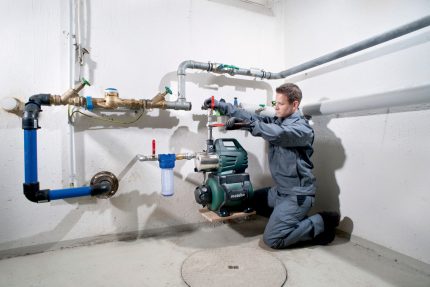
Of great importance bandwidth. The larger it is, the more convenient and easier it is to use a home plumbing system. But the station indicator should not exceed the capacity of the well, otherwise there will be differences in the work.
For a small country house, where the owners are regularly located only in the summer season, and appear in the fall and winter from time to time, a station with a capacity of up to 3 cubic meters per hour is enough. For a permanent residence cottage, it is worth taking a model with an indicator of up to 4 cubic meters / h.
We also recommend that you read our other article, where we talked in detail about how to choose pumping station for giving.
If you need to connect an irrigation system to communications, it is recommended to consider devices that can pass through yourself up to 5-5.5 m3 / h.
Volume of internal water storage tank in standard stations it ranges from 18 to 100 liters. Most often, customers choose tanks from 25 to 50 liters. This size is considered optimal for a family of 3-4 people. If friends or relatives often come to visit, you should take a more capacious unit.

Body material not particularly important. You can use pumping stations integrated in technopolymer blocks. They will cost much cheaper. An additional amount will have to be paid for the steel case with anodized coating, but the station will be able to be located not only in the house, but also on the street.
Sound background work is of great importance. For accommodation in residential premises, you need to look for the most quiet devices that do not interfere with a comfortable rest. More powerful units that sound loud, it is advisable to place them in the basement or utility buildings, where their noise will not annoy anyone.
Conclusions and useful video on the topic
Specific features of pumping stations. Answers to the most popular questions related to pumping equipment.
How to choose a good pumping station for your home:
What you need to know about installing a pumping station. How to mount equipment so that it does not freeze in winter:
It will help to establish a normal supply of water to all consumption points located in the living room. pump station connection with pressure boost option.
The device will automatically adjust the water level in the system, increase the pressure and ensure comfortable use of the water resource at any time convenient for property owners. You no longer have to coordinate with your family the shower regimen and turn off taps throughout the house to wash the dishes in the kitchen.
Do you use stations to increase water? Please tell which device did you prefer? What criteria were decisive when choosing? Leave your comments, ask questions, share experiences in the block below.

 Pumps to increase water pressure: types, how to choose, installation technology + wiring diagrams
Pumps to increase water pressure: types, how to choose, installation technology + wiring diagrams 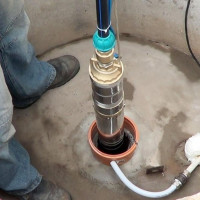 Submersible pumps for the well: 15 best models + tips for customers
Submersible pumps for the well: 15 best models + tips for customers  Rating of pumps for drip irrigation: TOP-12 of the best offers + recommendations to customers
Rating of pumps for drip irrigation: TOP-12 of the best offers + recommendations to customers 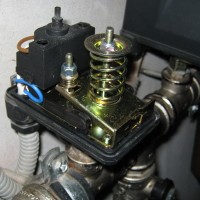 Adjusting the pressure switch for the accumulator: instructing on the equipment setup + expert advice
Adjusting the pressure switch for the accumulator: instructing on the equipment setup + expert advice 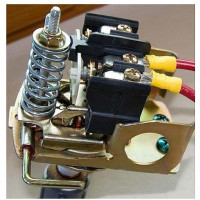 How a pressure switch for a pumping station works + rules and features of its adjustment
How a pressure switch for a pumping station works + rules and features of its adjustment 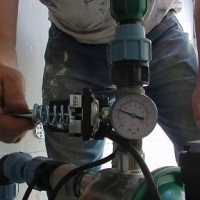 Water pressure switch: what it is, how it works + how it is adjusted
Water pressure switch: what it is, how it works + how it is adjusted  How much does it cost to connect gas to a private house: the price of organizing gas supply
How much does it cost to connect gas to a private house: the price of organizing gas supply  The best washing machines with dryer: model rating and customer tips
The best washing machines with dryer: model rating and customer tips  What is the color temperature of light and the nuances of choosing the temperature of the lamps to suit your needs
What is the color temperature of light and the nuances of choosing the temperature of the lamps to suit your needs  Replacement of a geyser in an apartment: replacement paperwork + basic norms and requirements
Replacement of a geyser in an apartment: replacement paperwork + basic norms and requirements
After all, in the winter, after all, in the summer we just cannot do without such a pumping station. Bought for a long time and forgot what it is when there is no water. Maybe, of course, they do not look very, but here beauty is not important, the main thing is functionality. We have Grundfos Hydrojet. As for the noise, it really is, there’s no getting away from it, although it is in our small extension. But we are already accustomed and do not notice. I would immediately recommend installing a voltage stabilizer for the pumping station separately, because she does not like drops, it will be a shame if it burns, and the cost is not small.
Cognitive rating. Are the hydraulic tanks at the pumping stations discussed here made of metal? I want to save a little on the cost of the station due to the tank, but without reducing the remaining parameters. It says that technopolymer tanks have the same functionality, but cost significantly less. It is clear that our climatic conditions are not simple and the station will need to be placed indoors, but how do plastic tanks withstand our water, is there data? In short - advise, is it worth contacting plastic tanks or not?
To be honest, you will save a little. For example, an expansion tank round TM “Aquatica” for 24 liters costs only $ 16, while a plastic analogue will cost $ 10.I do not see significant benefits, given that the membrane expansion tank made of metal will be more durable. The metal thickness of 2 mm allows it to withstand pressure up to 4 Bar, the maximum working temperature of 99 * C, the minimum working temperature of -10 * C. Plastic counterparts cannot provide such operating parameters.
As you can see, the savings are not significant to give preference to a plastic tank, which with the same volume will withstand less pressure.
Your list is pumping stations, not pressure boosting pumps, except for 2 options. The pressure boosting pump has an integrated flow sensor.